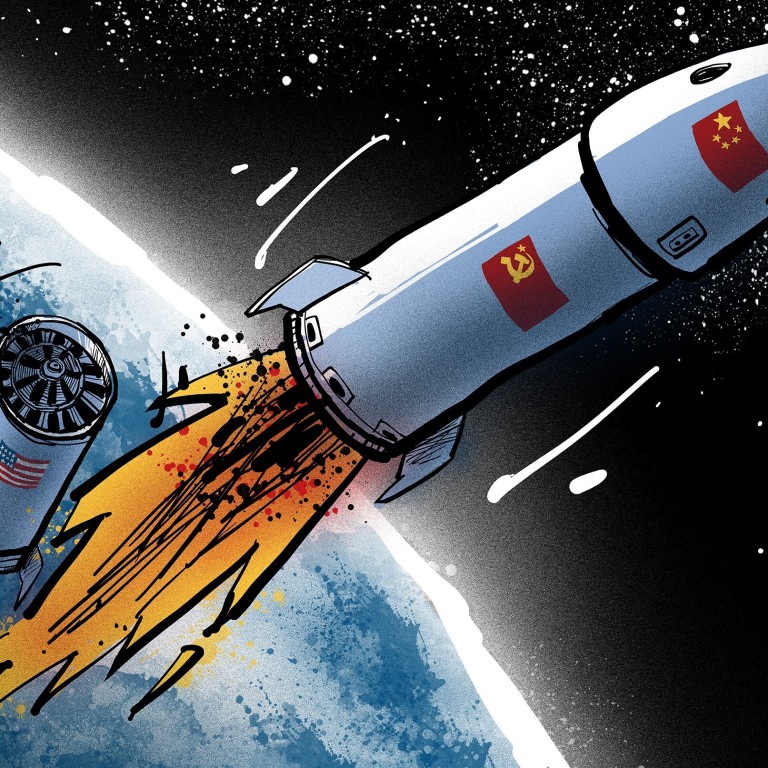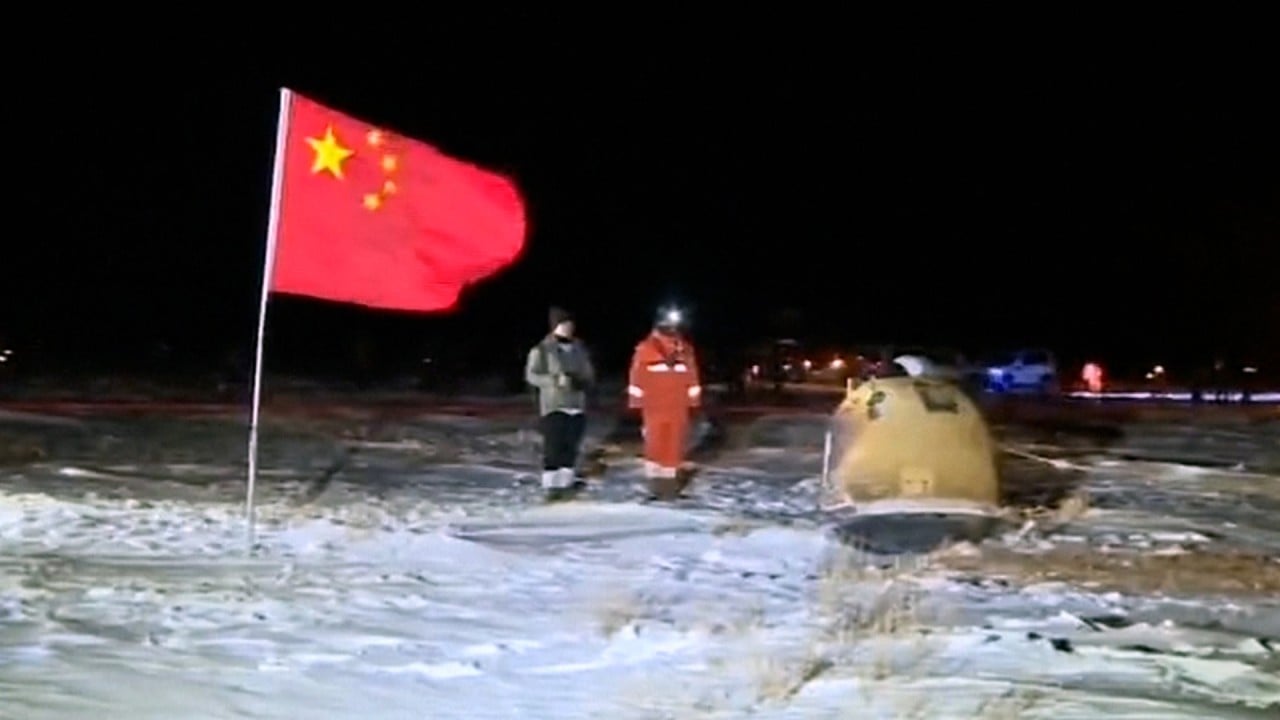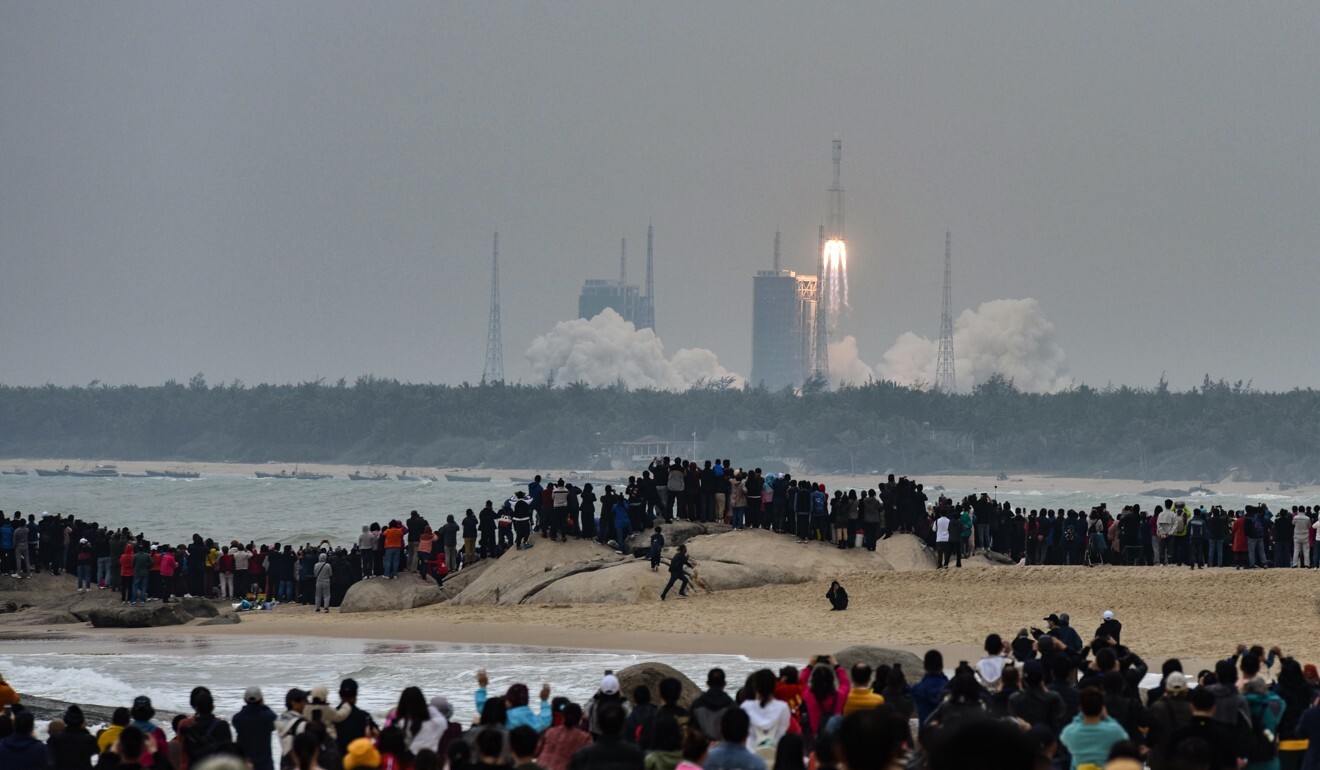
In the new space race with the US, how far can China’s cooperation with Russia go?
- Uncertainty over US foreign policy is pushing Russia and China to expand space cooperation
- However, China’s own advances in space research have shifted the balance between Moscow and Beijing
Moreover, China has been leading the world in space launches, with 39 conducted in 2018 and 34 in 2019, leaving the United States and Russia behind. This year, China has accounted for 35 per cent of global space launches.
Meanwhile, the Russian space industry has suffered budget cuts following the economic recession of 2014-2017 and the economic fallout from Covid-19. New spending cuts are planned until 2023. Russia’s launch activities have fallen by about 40 per cent compared to last year.
China has also made a great leap forward in space research with two ambitious missions: the Chang’e-5 probe has returned with the first lunar samples in decades, and Tianwen-1 is China’s first mission to Mars. Chinese space missions are making international lists, including one by MIT Technology Review.
The diplomatic implications of a crystallising space race are stronger than they might seem. In early December, US Vice-President Mike Pence said that Americans are “in the lead” in the space race which started in the 1950s.
Nasa experts understand that China is a rising leader among other emerging space powers, and that it would be shortsighted for Washington to alienate the US from Chinese expertise, which will only accumulate with each successful new mission.

01:28
China’s Chang’e 5 lunar mission returns to Earth with moon samples
The two countries are in an intensifying feud with the West, amid uncertainty over the foreign policy priorities of the new Biden administration.
The bold ambitions behind China’s Chang’e 5 moon mission
This requires cutting-edge technology and huge financing; it is enormously expensive to ensure the autonomous operation of a spacecraft over a long period of time far from Earth, with no possibility of physical assistance. Specifically, multiple tests and checks are required for each of the thousands of components that constitute a spacecraft, and testing is conducted in laboratories with costly high-precision equipment.
Thus, the expansion of cooperation on advanced space research, which will surely drive the space race for years to come, shows Moscow and Beijing’s readiness to move closer in security cooperation.
Space is becoming a competition arena for major powers. Significantly, US President Donald Trump in 2019 created a new branch of the US military, the US Space Force. In 2015, Russia re-established its Space Forces as part of the Russian Aerospace Forces.
The militarisation of space is a menacing threat. In March, the US Space Forces announced a new offensive weapon, an enhanced version of its ground-based system that jams satellite transmissions.
Biden will struggle to rebuild transatlantic alliance to counter China
Anticipating a new arms race and the US’ growing military capabilities in space, Russia and China proposed in 2008 an international treaty prohibiting the deployment of weapons in outer space, similar to the 1967 Outer Space Treaty. However, Washington rejected the Russian-Chinese draft that would “limit access to or use of space”. Since then, the negotiation process has been stuck.
Despite China’s burgeoning cooperation with Russia, there have been bottlenecks. In 2017, China reportedly reached out to Russia with a proposal to jointly build a space station, which could replace the outdated International Space Station. In 2018, the two sides discussed the possibility, which was consistent with their agreement to expand cooperation on lunar research and deep-space exploration.

Russia’s shrinking space budget makes large projects unlikely. In this regard, China may be a suitable partner, taking on the financial burden while Russia contributes expertise and knowledge.
However, China’s recent advances in space research show it is capable of doing big things on its own – its development of technology for reusable rockets should keep the costs of future space missions down, for example.
With the Chinese space industry becoming more sophisticated and the Russian space agency striving for resources (Roscosmos may see a cut of 60 billion roubles (US$813 million) from 2021-2023), Moscow needs to find different ways to approach Beijing. It will need to come up with more appealing projects, rather than just relying on its expertise to attract China, as it did before.
For this reason, the depth of future Russia-China space cooperation will reflect the limits of their strategic partnership.
Danil Bochkov is an expert at the Russian International Affairs Council

